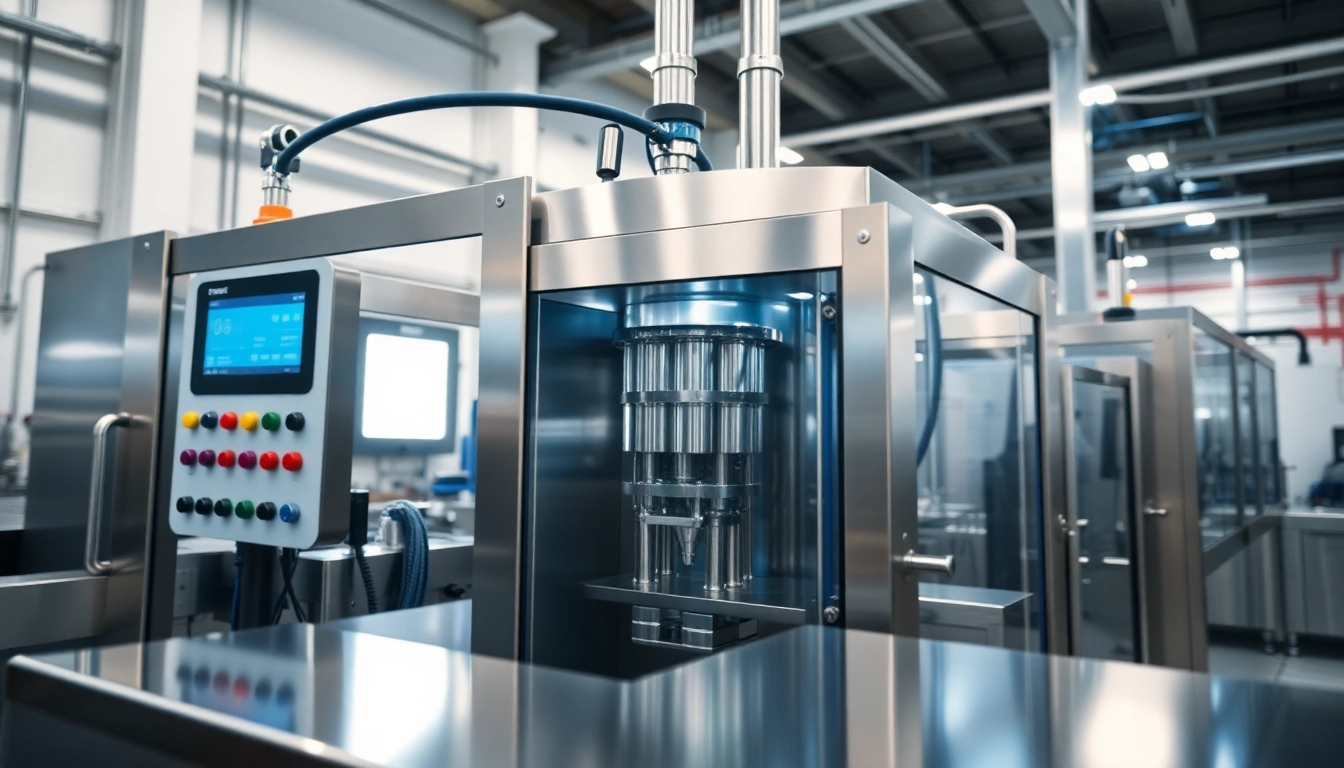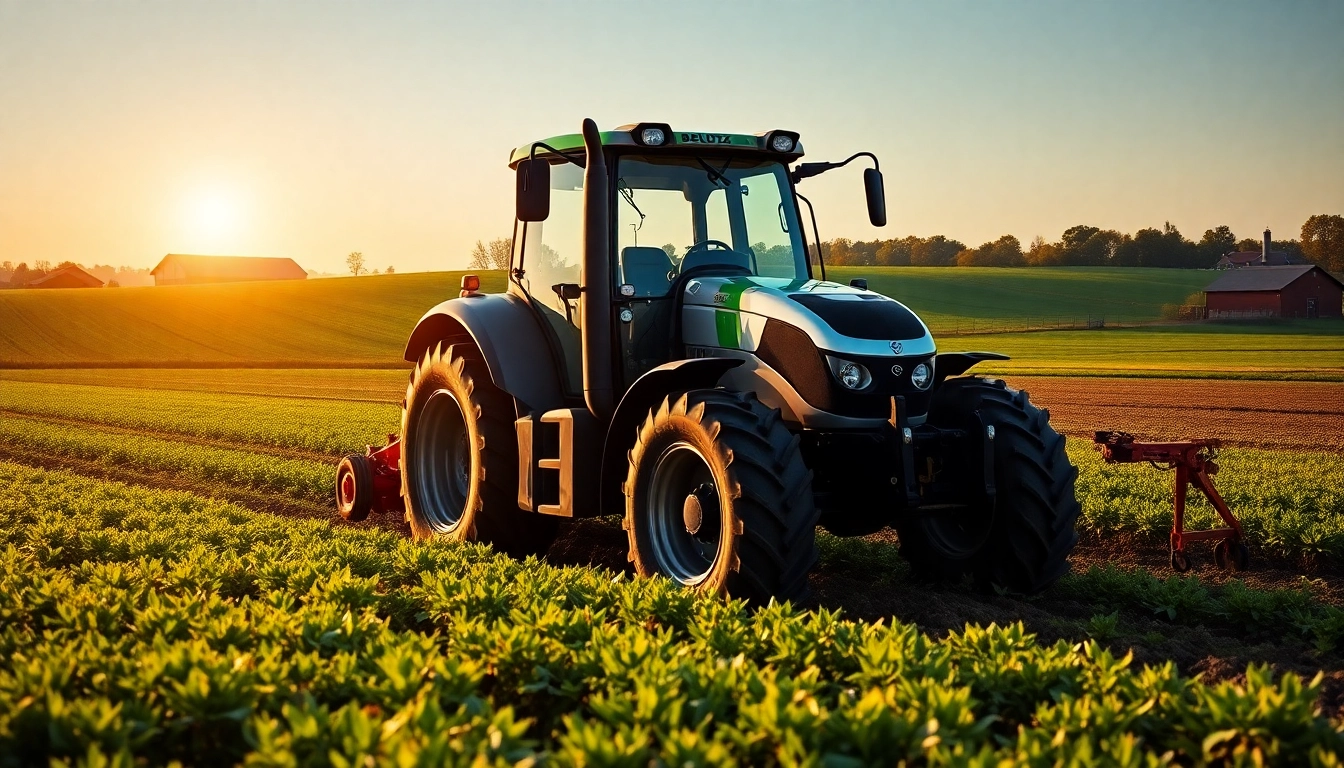1. Understanding Filling Machines
1.1 Definition and Purpose
A filling machine is a specialized device used in various industries for accurately dispensing liquids, powders, or granular products into containers. The purpose of a filling machine is not only to ensure efficiency in the packaging process but also to maintain the quality and consistency of the product being filled. With advancements in technology, these machines can offer high accuracy and speed, thereby increasing productivity while reducing waste. Whether it’s for bottling beverages, pharmaceuticals, or cosmetics, a filling machine plays a crucial role in the manufacturing supply chain.
1.2 Key Types of Filling Machines
Filling machines typically fall into several categories based on their operational mechanisms and automation levels. The main types include:
- Volumetric Fillers: These machines fill containers based on a specific volume, ensuring precision. They are prevalent in industries like beverage packaging.
- Weight Fillers: Utilizing scales, these machines fill containers by weight, which is essential for products where density might vary.
- Piston Fillers: Ideal for thicker liquids, piston fillers use a piston mechanism to create a vacuum that draws in the liquid before dispensing it into the container.
- Auger Fillers: These are designed for powders and granules, utilizing an auger to measure the量 and dispense them accurately.
- Pump Fillers: Commonly used for liquids, they utilize a pump to transfer fluid from the source to the container, accommodating various viscosities.
1.3 Applications in Various Industries
Filling machines are incredibly versatile, making them suitable for a wide range of applications across various industries. Here are some notable examples:
- Food and Beverages: From soft drinks to sauces and dressings, filling machines help package consumables efficiently while maintaining hygiene standards.
- Pharmaceuticals: Accurate filling in this industry is crucial due to the necessitation of dosage precision in medications and supplements.
- Cosmetics: Products like lotions, oils, and perfumes require precise filling to ensure consistency and customer satisfaction.
- Chemicals: Filling machines are widely used for packaging various chemicals, ensuring that hazardous materials are handled safely.
2. Choosing the Right Filling Machine
2.1 Factors to Consider
Selecting the appropriate filling machine requires careful consideration of several factors. Key aspects to evaluate include:
- Type of Product: The viscosity and physical properties of the product play a significant role in dictating the type of filling machine suitable for the task.
- Container Type: The design and size of the containers must align with the machine’s specifications to ensure compatibility.
- Production Rate: Consider the desired production speed. Automated systems may be necessary for high-volume operations.
- Budget: Balance the initial investment with the expected return; choosing the right machine can greatly impact profitability.
2.2 Comparing Manual vs. Automated Systems
When choosing a filling machine, organizations often find themselves weighing manual versus automated systems. Manual filling machines tend to be more affordable and flexible, making them suitable for small to medium-sized businesses or those with fluctuating production needs. On the other hand, automated systems offer greater speed and efficiency, making them ideal for larger production runs. Additionally, the consistency of filling accuracy is generally superior in fully automated machines, which can reduce waste and improve product quality in the long run.
2.3 Industry-Specific Requirements
Depending on the sector, specific requirements may arise. For instance, in the pharmaceutical industry, machines must meet stringent regulatory standards to ensure compliance with safety and efficacy guidelines. Meanwhile, food and beverage manufacturers need to prioritize sanitary designs that facilitate easy cleaning and maintenance. Understanding these unique requirements is critical in selecting the appropriate filling machine.
3. Features of High-Performance Filling Machines
3.1 Precision and Accuracy Metrics
Precision and accuracy are vital for filling machines, especially in industries where dosage is critical. High-performance machines should boast an accuracy rate of 99.5% or higher. Features that contribute to this level of precision include adjustable settings, specialized nozzles, and reliable sensor technologies that detect the fill level. Companies often rely on feedback and data analytics to continuously monitor and improve these metrics over time.
3.2 Speed and Output Capabilities
The productivity of a filling machine is defined by its speed and output capabilities. High-speed filling machines can fill thousands of containers per hour, significantly reducing labor costs and increasing output. Features like multiple filling heads or advanced conveyor systems can optimize the filling process. For companies operating with tight deadlines, effective machine speed can be a game-changer, allowing them to meet market demands more efficiently.
3.3 User-Friendly Interfaces and Controls
Modern filling machines often come equipped with user-friendly interfaces that allow operators to monitor and control various parameters easily. Touchscreen controls enable quick adjustments to settings, and advanced software can provide real-time performance analytics. Such interfaces are designed to minimize training time for staff, thus facilitating smoother operations across the production line.
4. Maintenance and Troubleshooting
4.1 Regular Maintenance Practices
Proper maintenance is essential to ensure longevity and optimal performance of filling machines. Regular maintenance practices include:
- Daily inspections to check for wear and tear.
- Cleaning components regularly to prevent contamination.
- Lubricating moving parts to ensure smooth operation.
- Updating software and firmware to maintain performance standards.
A well-structured maintenance plan can help identify potential issues before they escalate, reducing downtime and repair costs.
4.2 Common Issues and Solutions
Various issues can arise with filling machines, including leaks, inconsistent fills, and mechanical failures. Common troubleshooting tips include:
- For leaks, inspect seals and gaskets for integrity and replace as necessary.
- If fills are inconsistent, check calibration settings and product viscosity.
- Mechanical failures may require inspection of motors and belts; loose parts should be tightened or replaced as needed.
4.3 When to Consult a Professional
Not every issue can be resolved internally; companies should know when to consult professionals. Complex mechanical failures, electrical malfunctions, or software issues often require specialized skills to diagnose and repair. Establishing a relationship with a reliable service provider can ensure that machines are serviced properly, minimizing disruptions to production.
5. Future Trends in Filling Machine Technology
5.1 Automation and Efficiency Innovations
As technology advances, the trend toward increased automation in filling machines is likely to continue. Innovations such as robotics and artificial intelligence (AI) integration are being explored to enhance production efficiency. Automated filling machines will not only speed up the filling process but will also improve accuracy and reduce labor costs, positioning businesses for greater competitiveness in the marketplace.
5.2 Eco-Friendly and Sustainable Practices
The global push for sustainability is influencing all sectors, including manufacturing. Future filling machines will likely incorporate eco-friendly features, such as reduced energy consumption and the use of recyclable materials. Machines designed with sustainability in mind can significantly lower a company’s Carbon footprint, aligning with growing consumer preference for environmentally responsible products.
5.3 The Role of AI in Filling Processes
Artificial intelligence is set to transform filling processes through predictive maintenance, quality control, and data analysis. AI can help identify patterns in machine performance, allowing businesses to optimize operations and anticipate maintenance needs proactively. Moreover, AI-driven quality control can enhance the verification of fill levels and seal integrity, ensuring that products meet regulatory standards.



